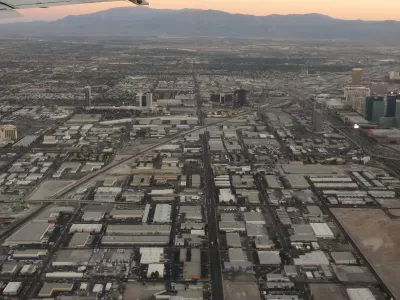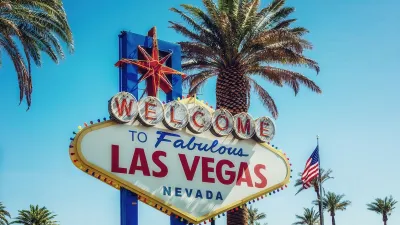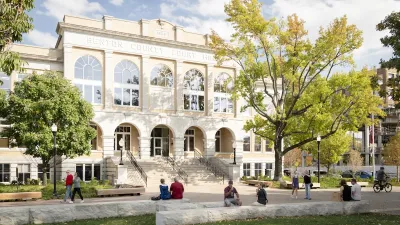As Las Vegas focuses attention on the city's West Las Vegas neighborhood, residents worry about possible displacement.

As a new round of planning charrettes launches with the goal to "inject new life" into the ailing West Las Vegas neighborhood, the large African American community that calls the neighborhood home is wary of yet another planning exercise that could potentially bring gentrification and displacement to the community. Writing in Landscape Architecture Magazine, Nate Berg reports that many of the area's residents have participated in previous planning charrettes but nothing had come out of them. UNLV's Steven Clarke, who is leading the process, notes that since 1996 there have been four previous studies of the area, but the reports generated little action. The city of Las Vegas is hoping to revitalize the area with new businesses and increased pedestrian activity—the area currently includes some 200 vacant parcels and a main commercial strip that resembles "a ghost town."
However, with improvements comes the possibility of displacement which has some residents concerned.
Beyond the overarching suspicion about the planning process, the community was especially concerned about any approach that would undo or push out the neighborhood’s African American heritage.
“We don’t want our history killed. We don’t want the blood, sweat, and tears that had gone into what made our community great erased,” says Shondra Summers-Armstrong, who’s lived in the community since the 1990s. “We know things change. We’re pretty okay with that. We know it’s not going to be the same as it was. But no one wants to be erased. No one.”
The charrette team, which included UNLV students, put their findings and recommendations together in "The HUNDRED Plan for the Historic Westside Community," which was released in January 2016. The plan provided multiple recommendations, including mixed-use development along the neighborhood's corridors and edges and the development of complete streets. The HUNDRED plan was included as part of the city's 2035 Downtown Master Plan document that was released in June, which will see the rezoning of parts of the neighborhood required to bring the community's visions to reality.
FULL STORY: Wary of Change

Alabama: Trump Terminates Settlements for Black Communities Harmed By Raw Sewage
Trump deemed the landmark civil rights agreement “illegal DEI and environmental justice policy.”

Planetizen Federal Action Tracker
A weekly monitor of how Trump’s orders and actions are impacting planners and planning in America.

The 120 Year Old Tiny Home Villages That Sheltered San Francisco’s Earthquake Refugees
More than a century ago, San Francisco mobilized to house thousands of residents displaced by the 1906 earthquake. Could their strategy offer a model for the present?

In Both Crashes and Crime, Public Transportation is Far Safer than Driving
Contrary to popular assumptions, public transportation has far lower crash and crime rates than automobile travel. For safer communities, improve and encourage transit travel.

Report: Zoning Reforms Should Complement Nashville’s Ambitious Transit Plan
Without reform, restrictive zoning codes will limit the impact of the city’s planned transit expansion and could exclude some of the residents who depend on transit the most.

Judge Orders Release of Frozen IRA, IIJA Funding
The decision is a victory for environmental groups who charged that freezing funds for critical infrastructure and disaster response programs caused “real and irreparable harm” to communities.
Urban Design for Planners 1: Software Tools
This six-course series explores essential urban design concepts using open source software and equips planners with the tools they need to participate fully in the urban design process.
Planning for Universal Design
Learn the tools for implementing Universal Design in planning regulations.
Clanton & Associates, Inc.
Jessamine County Fiscal Court
Institute for Housing and Urban Development Studies (IHS)
City of Grandview
Harvard GSD Executive Education
Toledo-Lucas County Plan Commissions
Salt Lake City
NYU Wagner Graduate School of Public Service





























